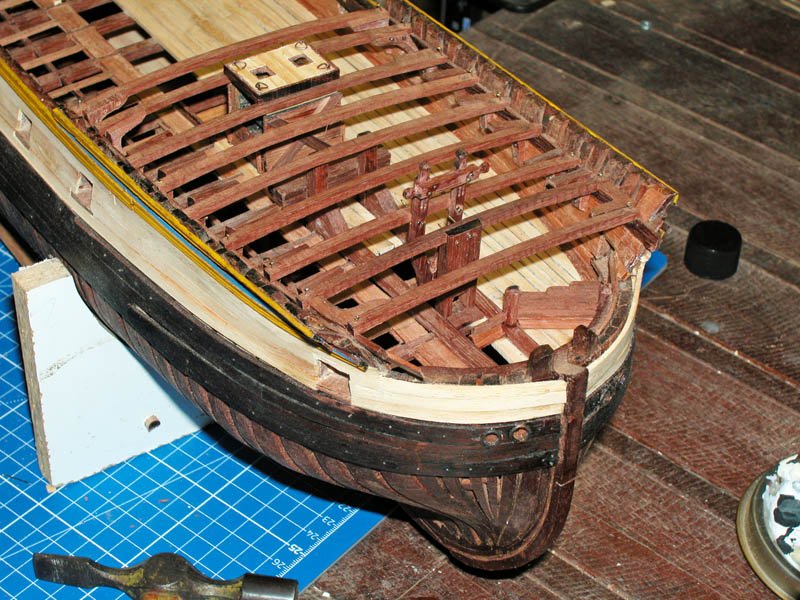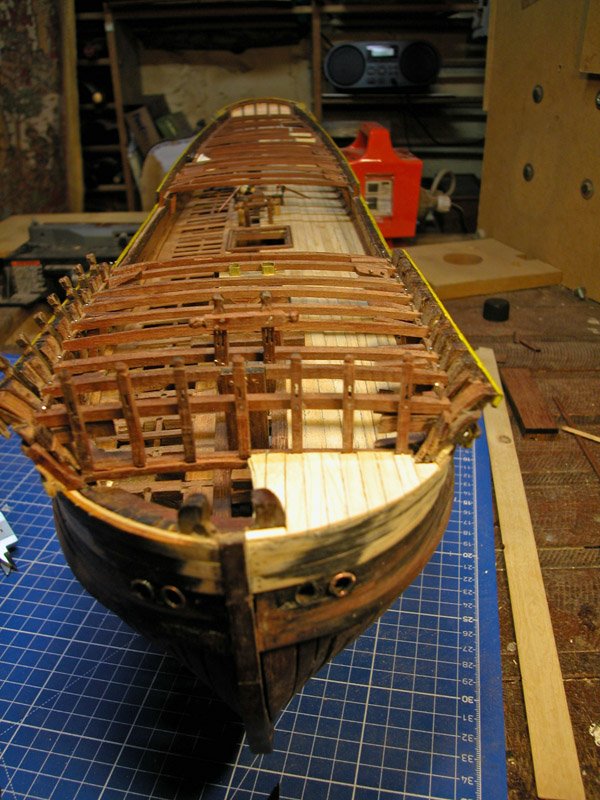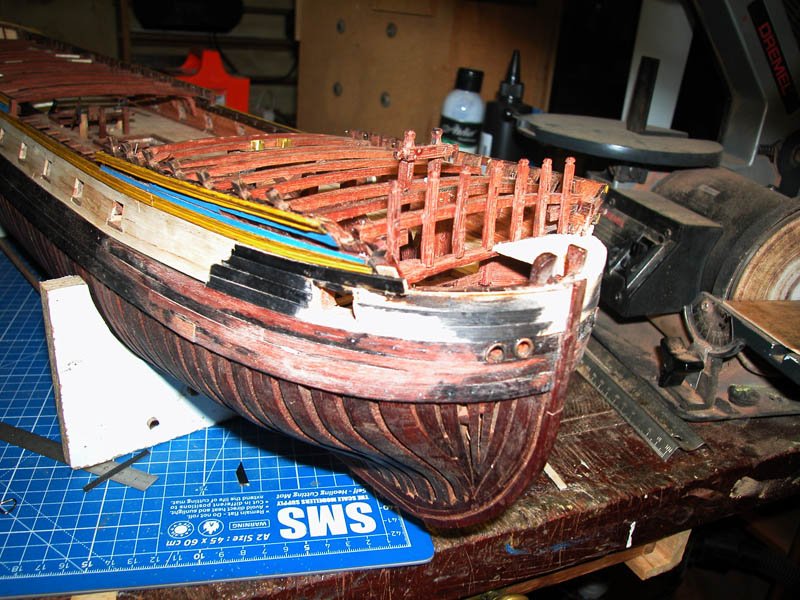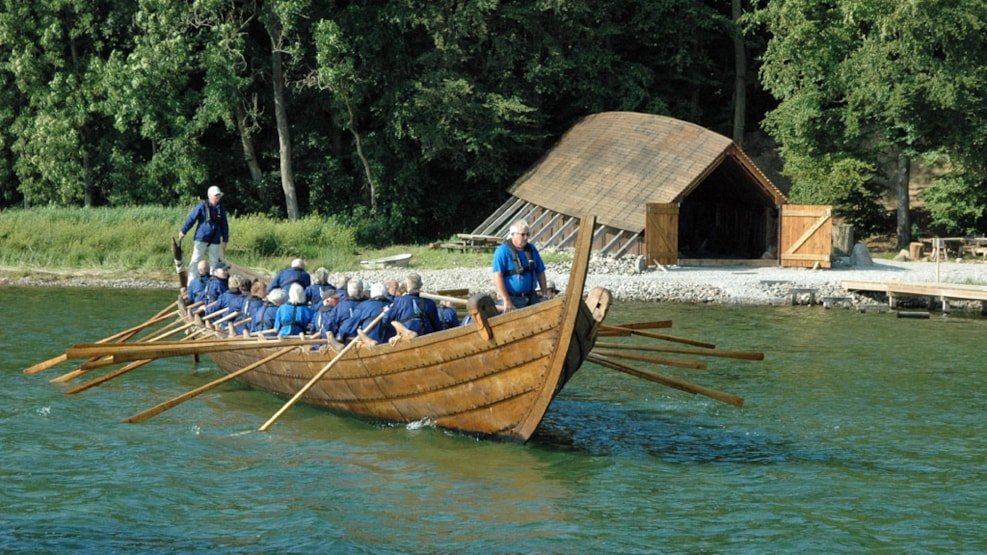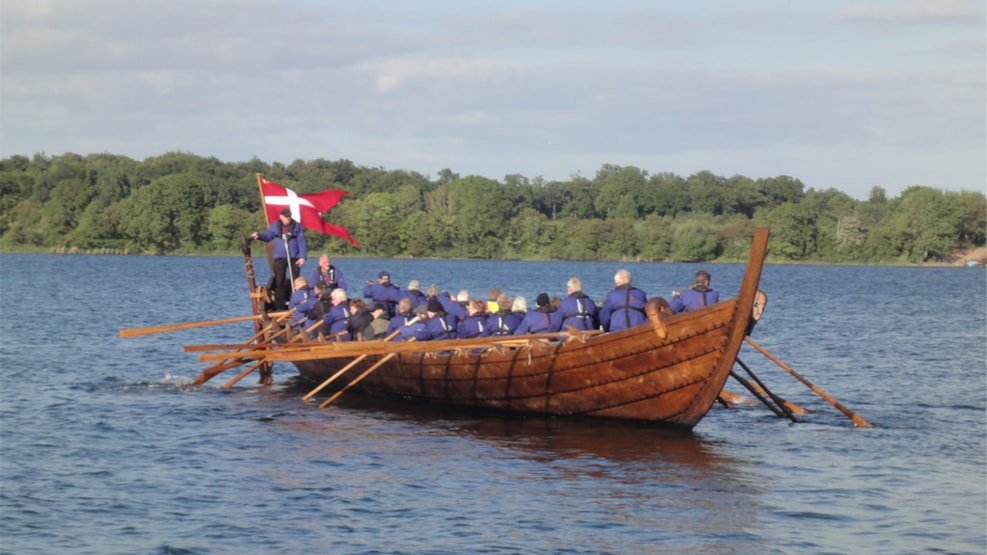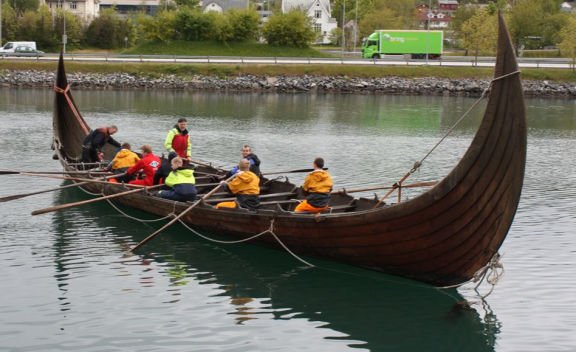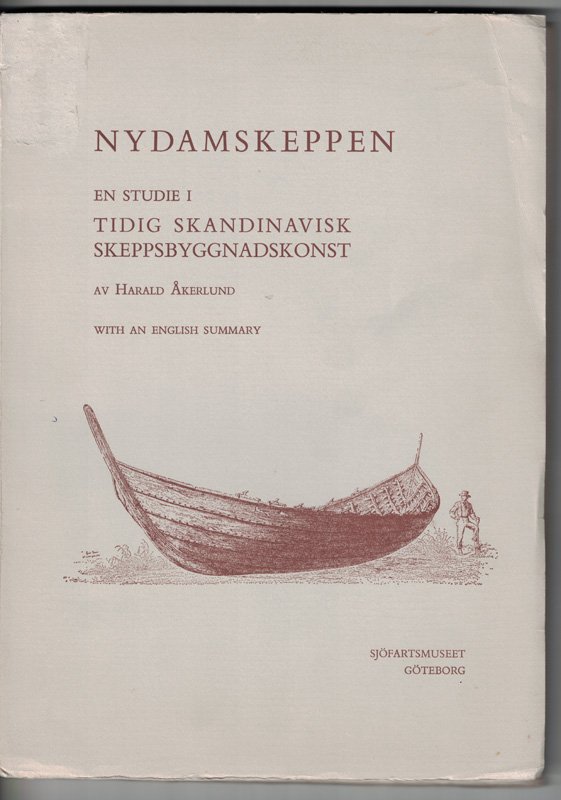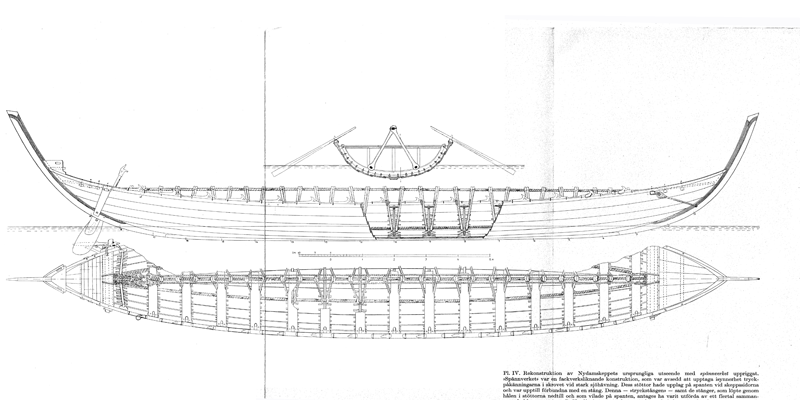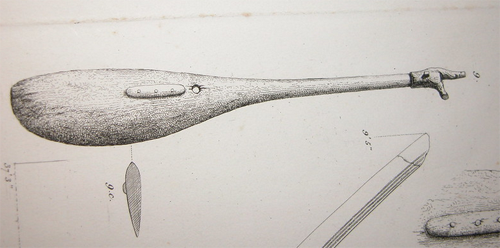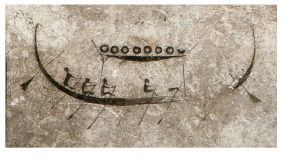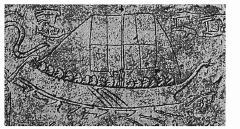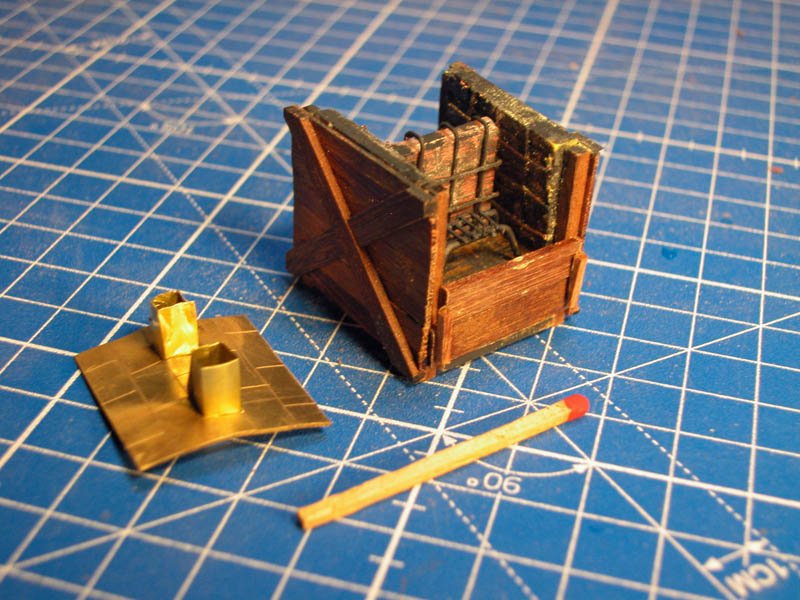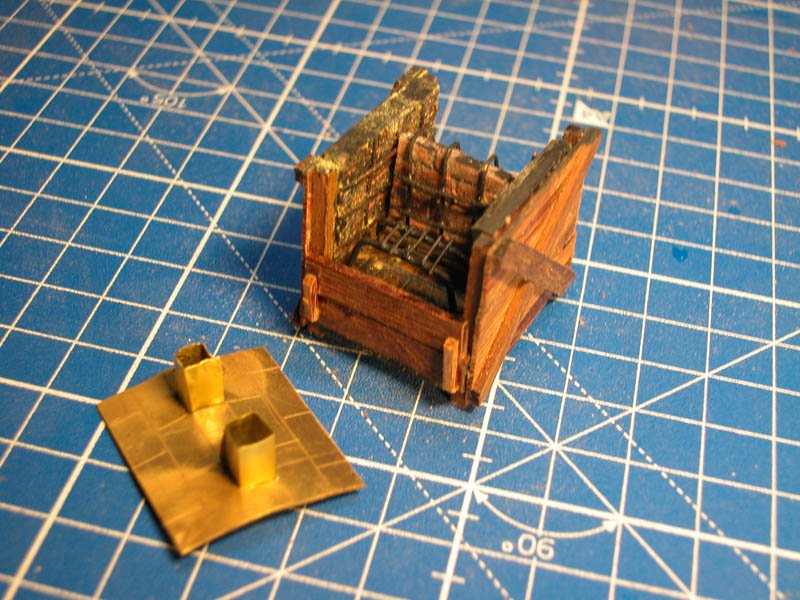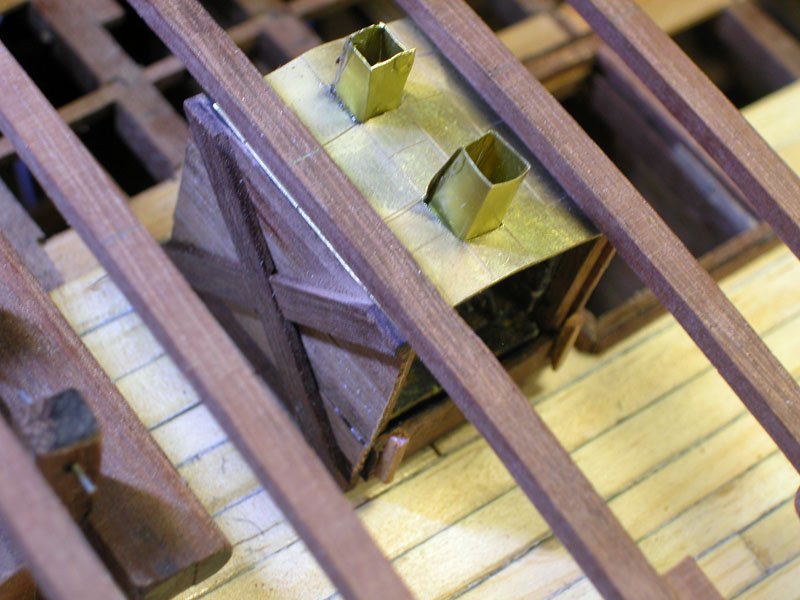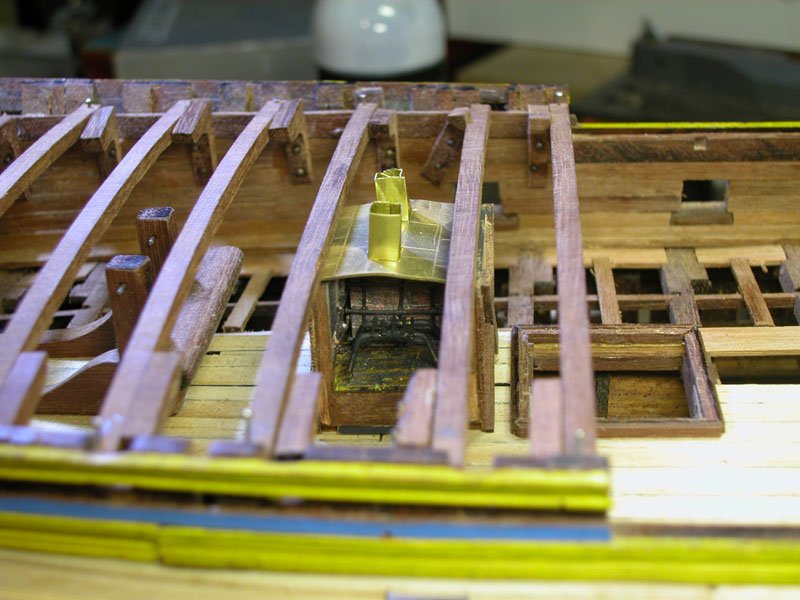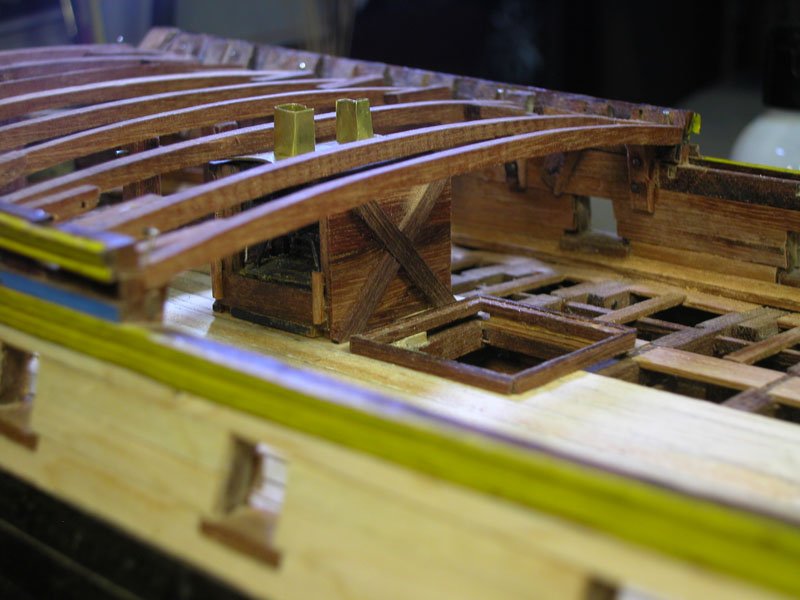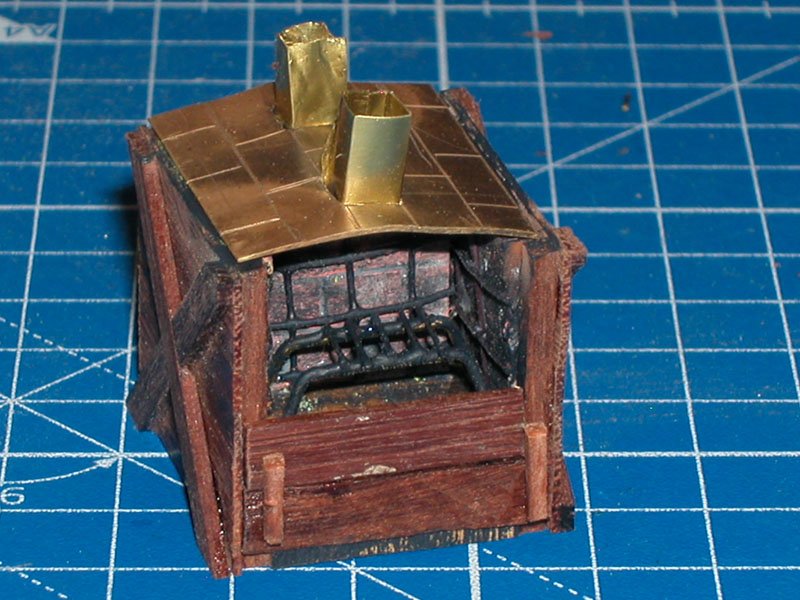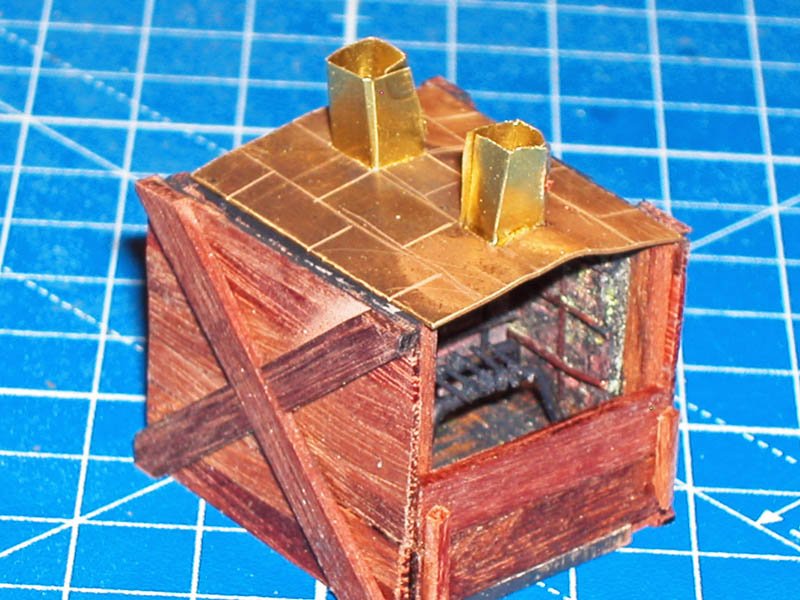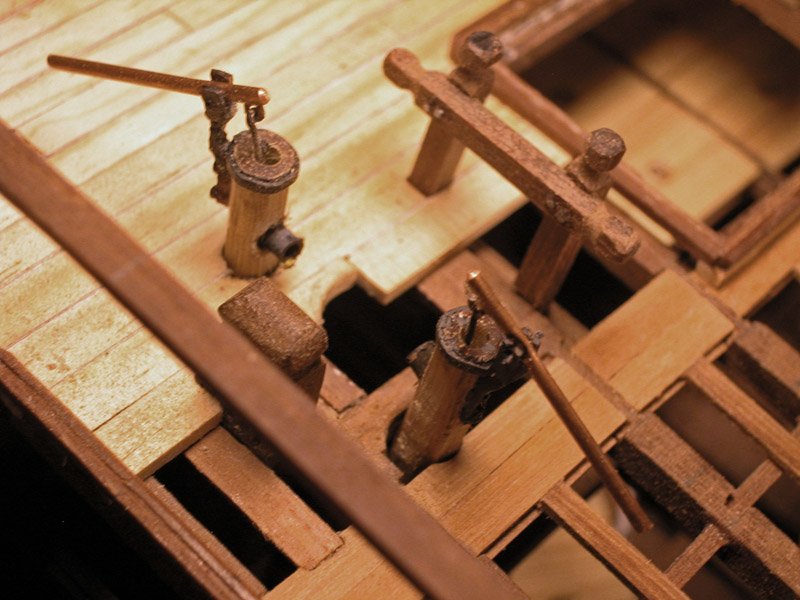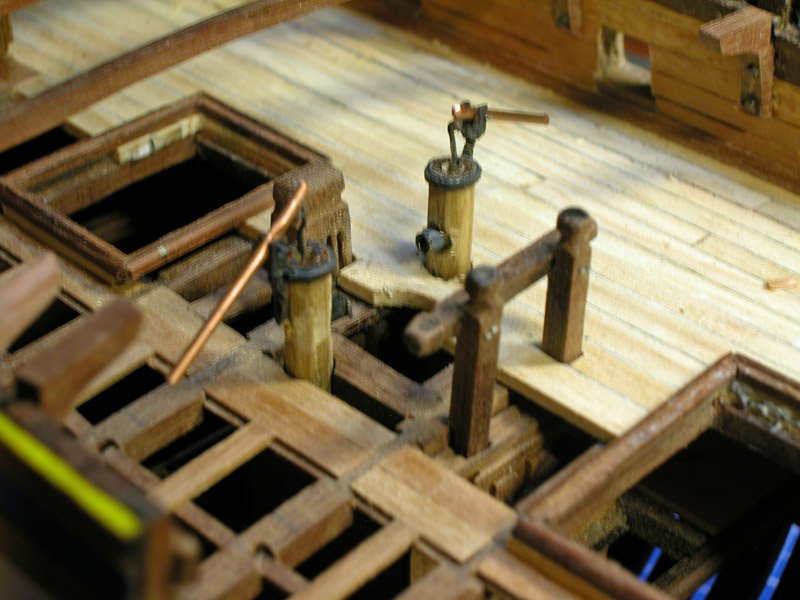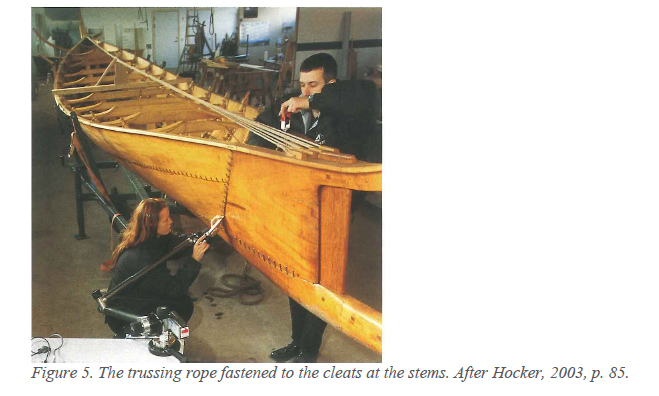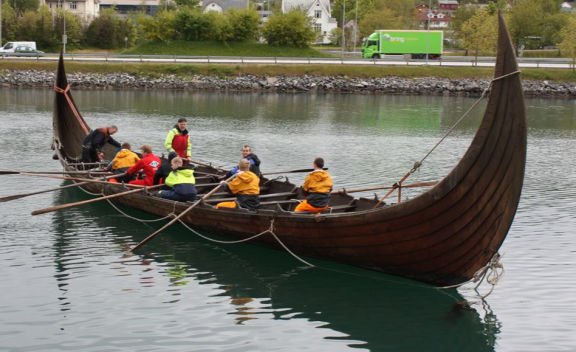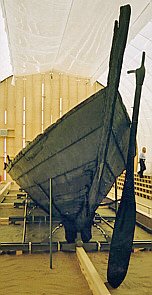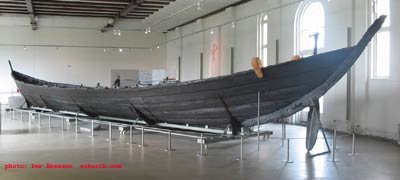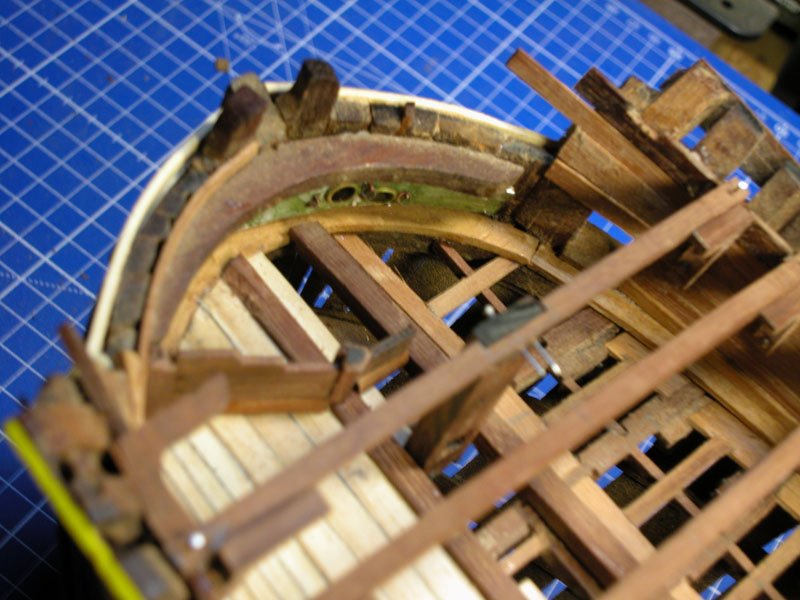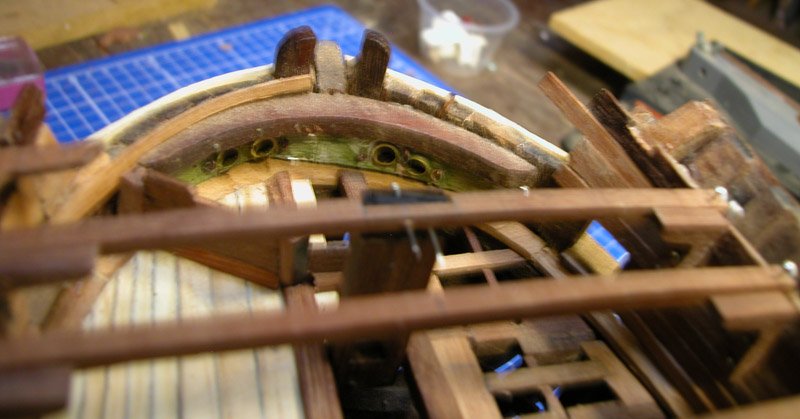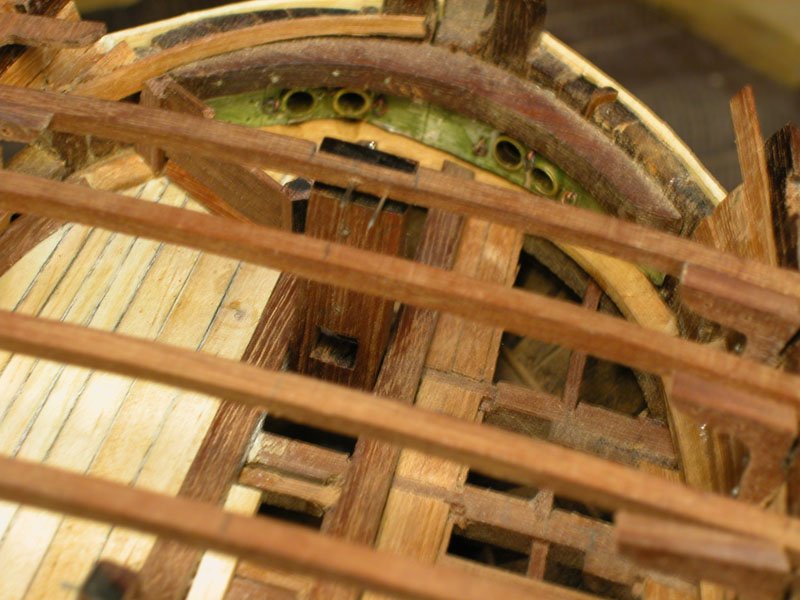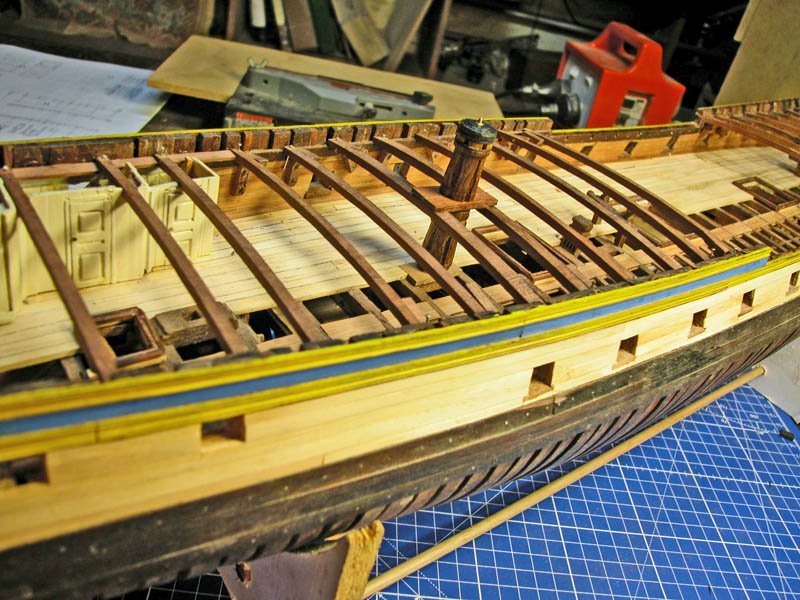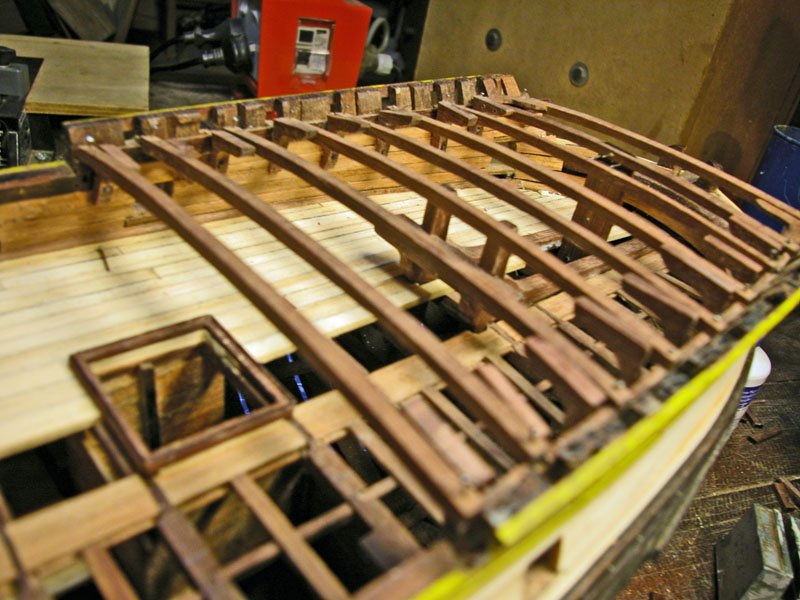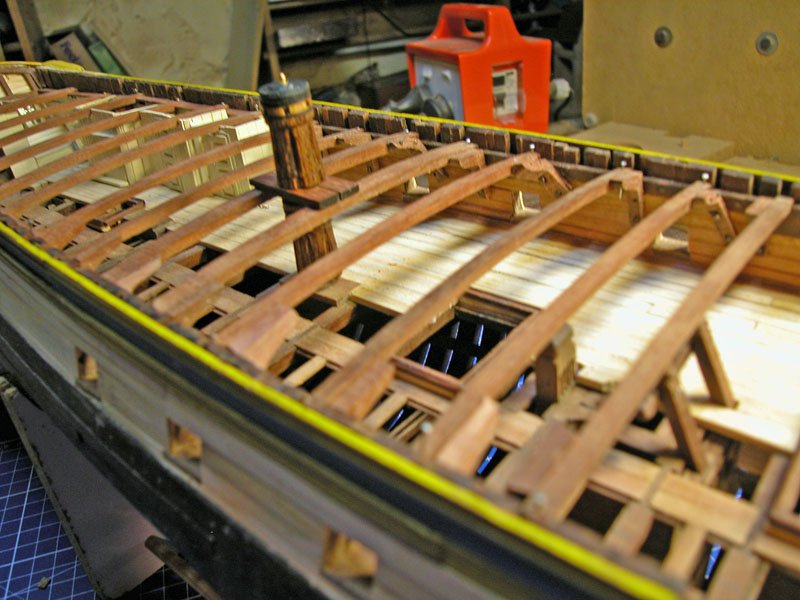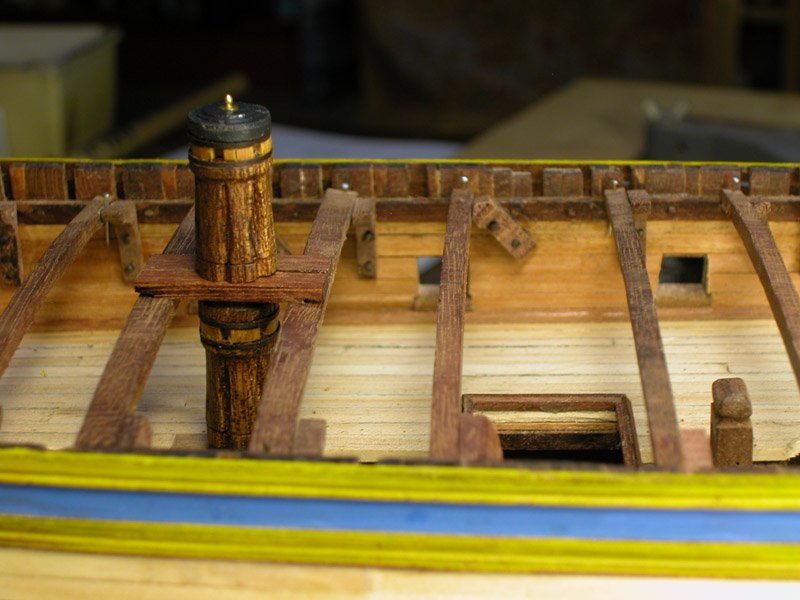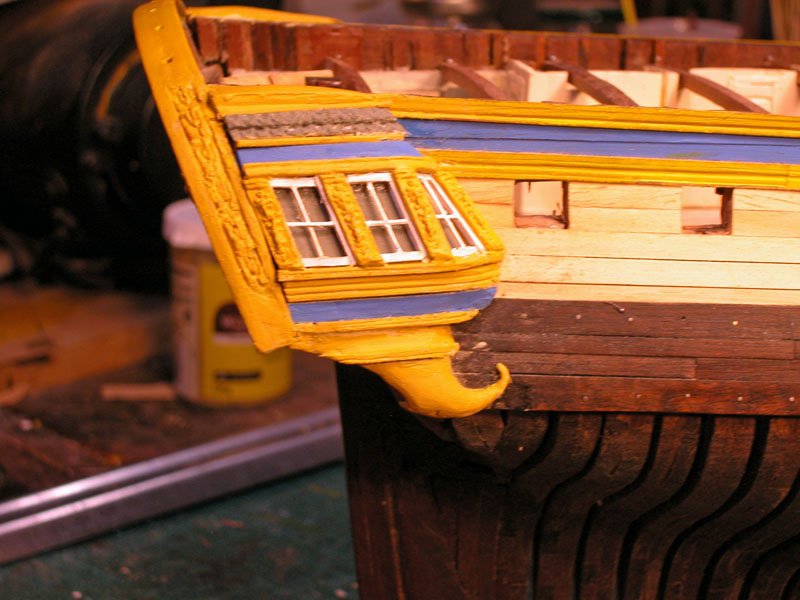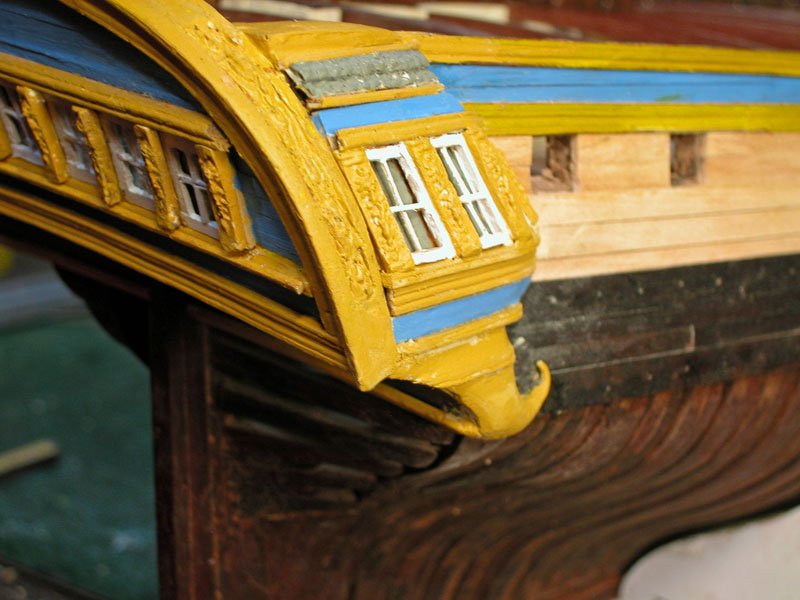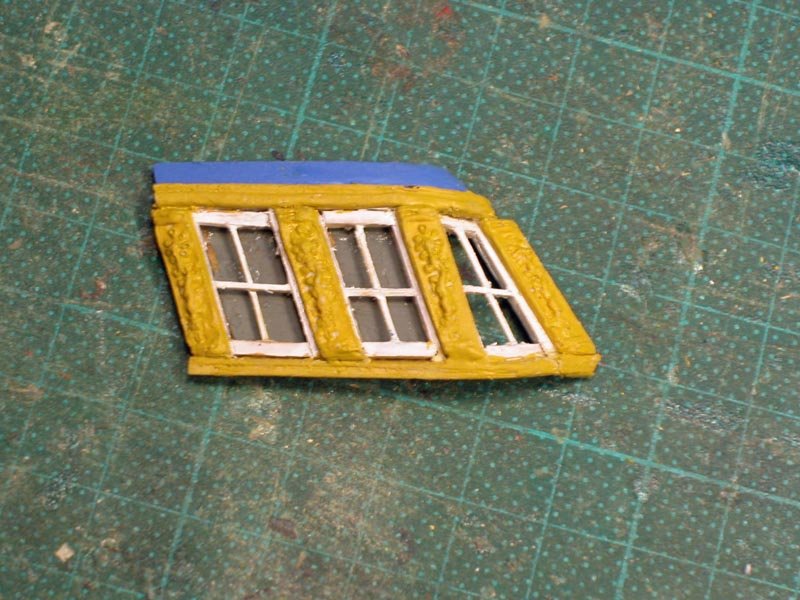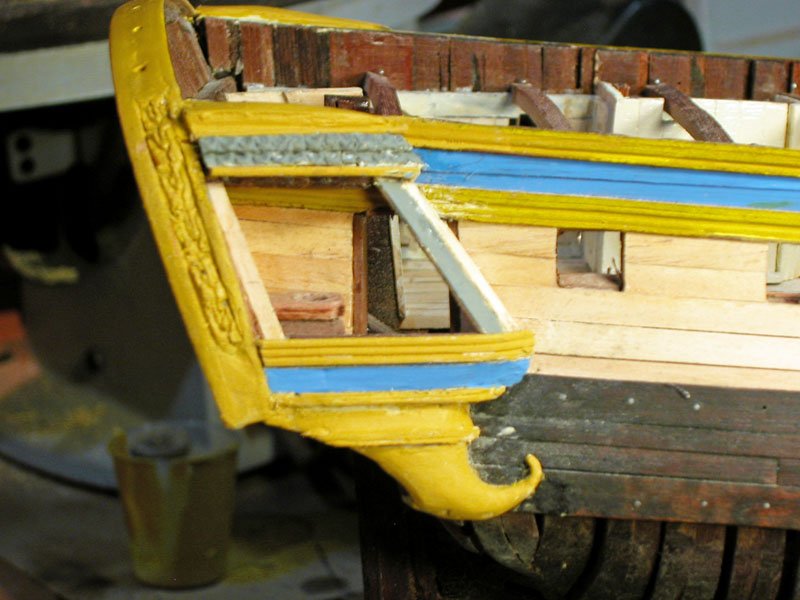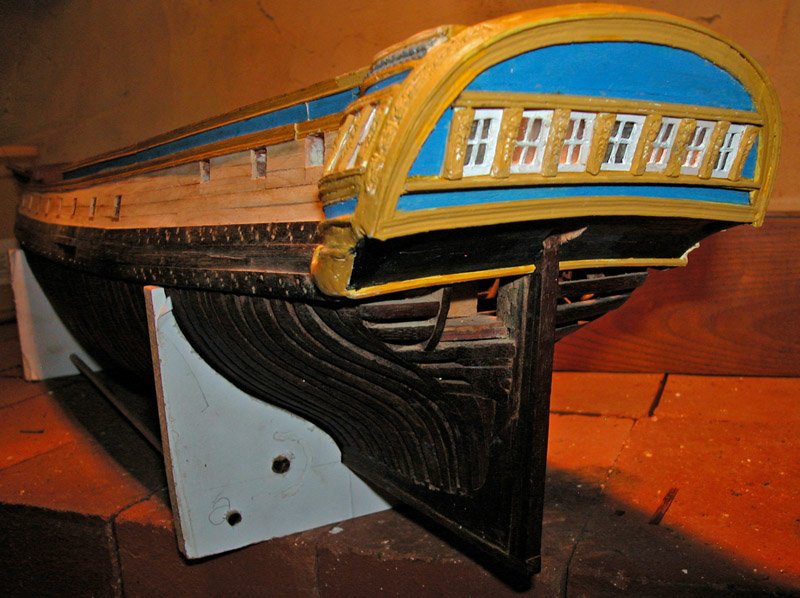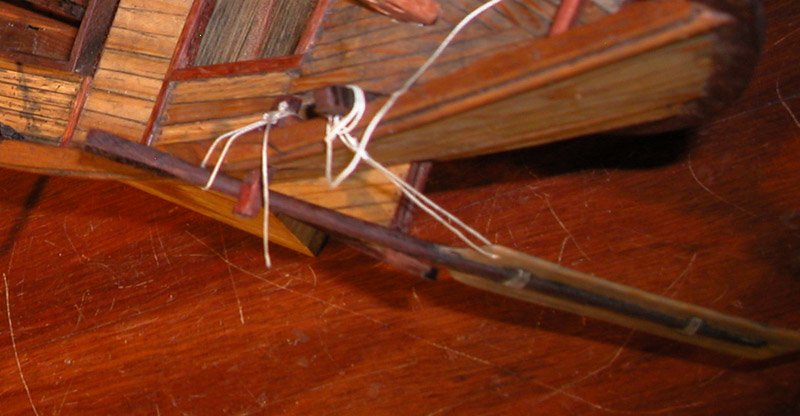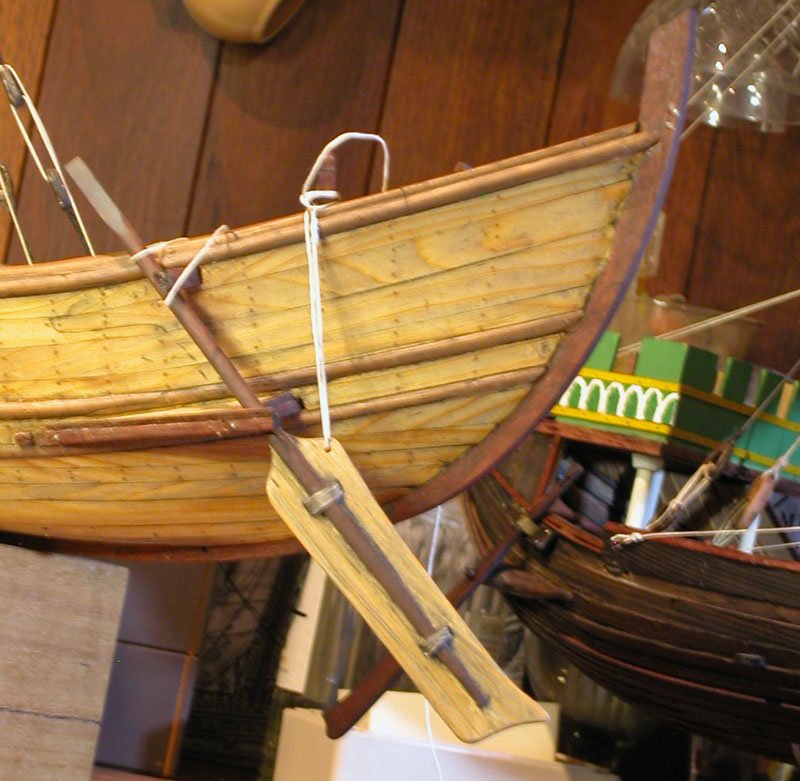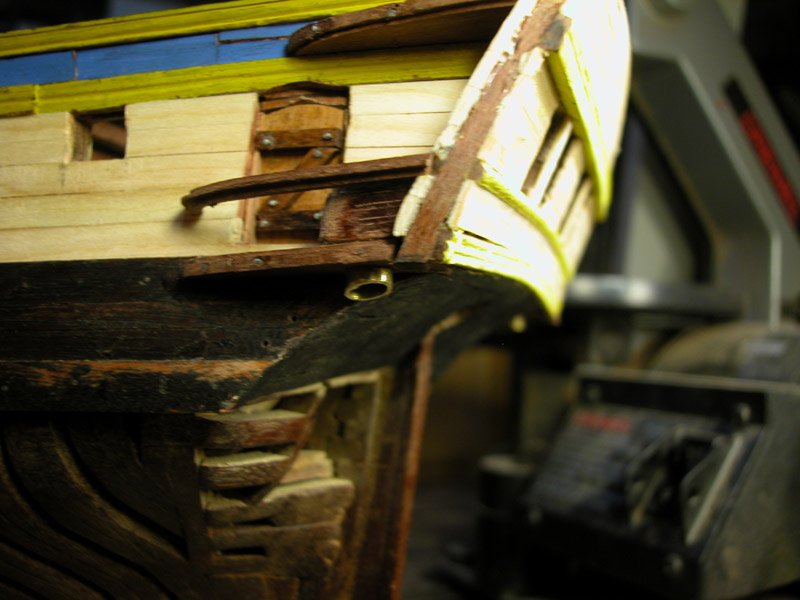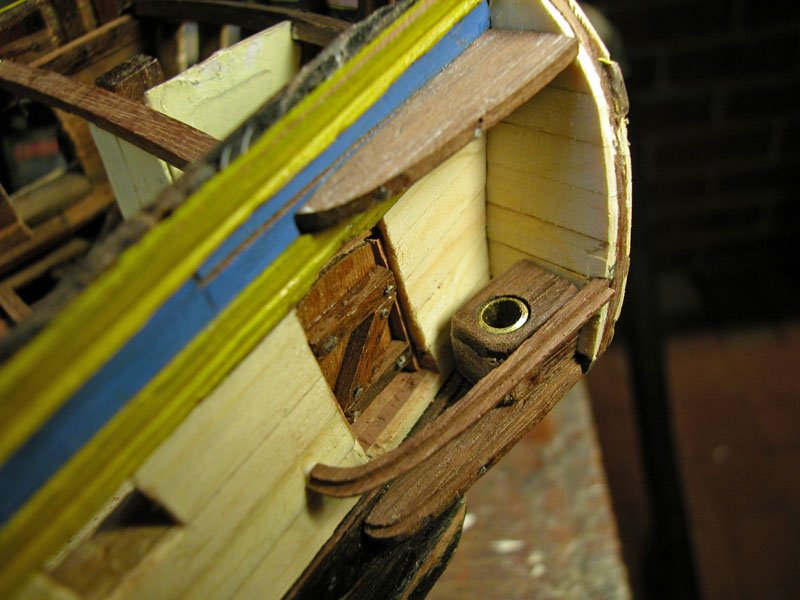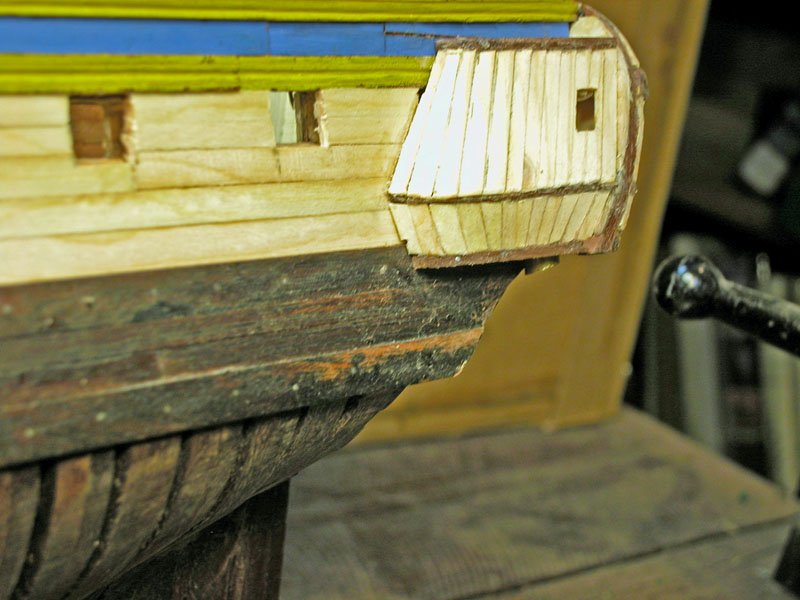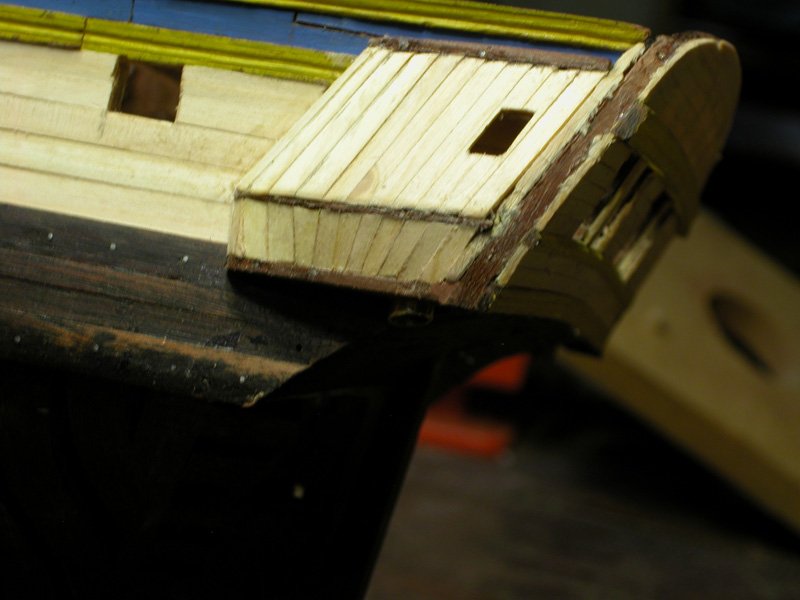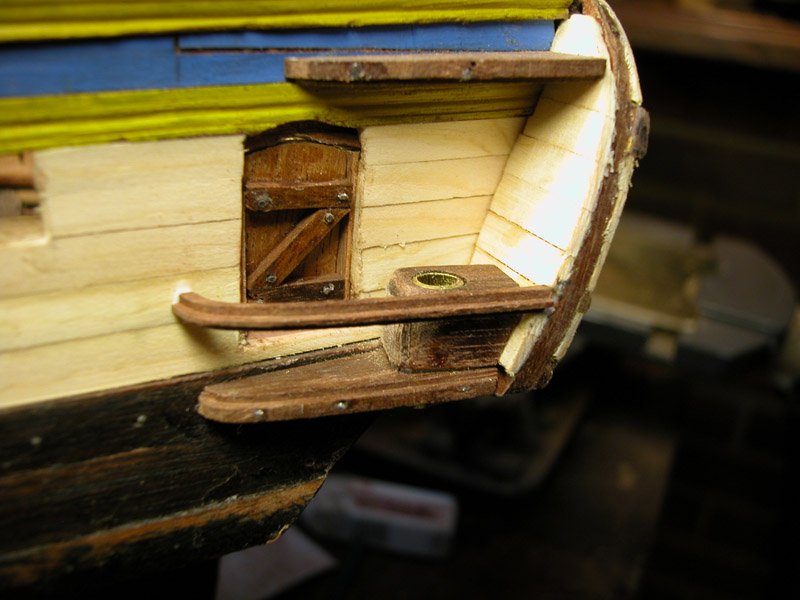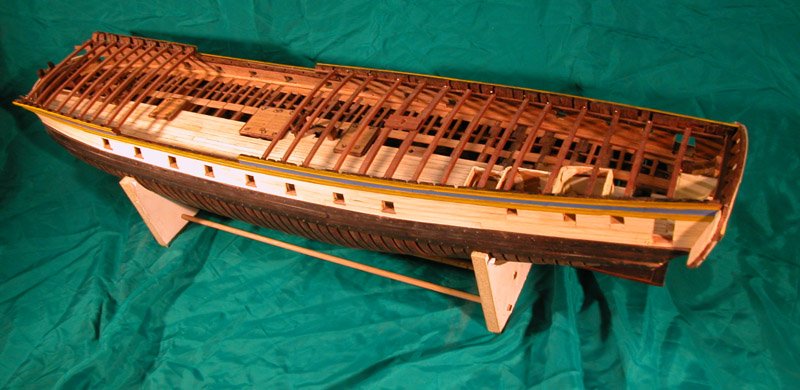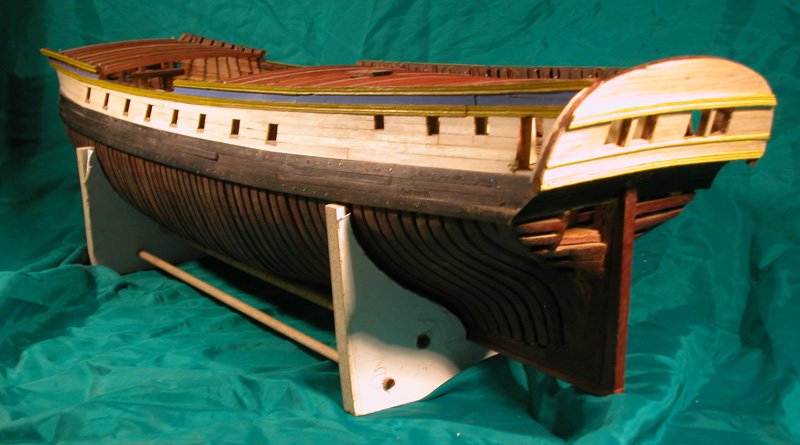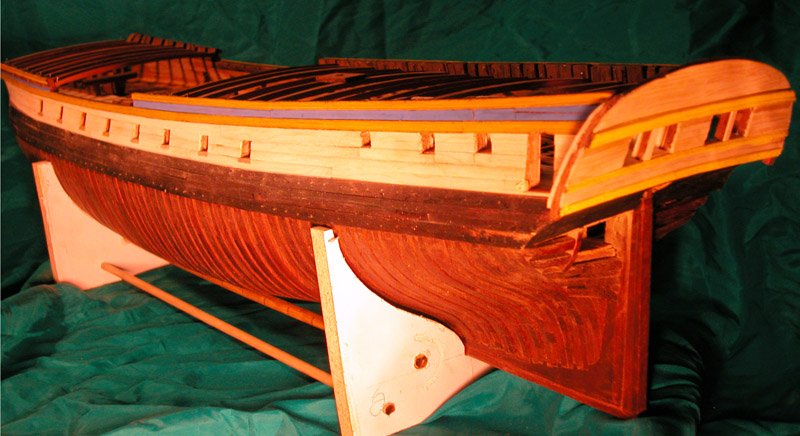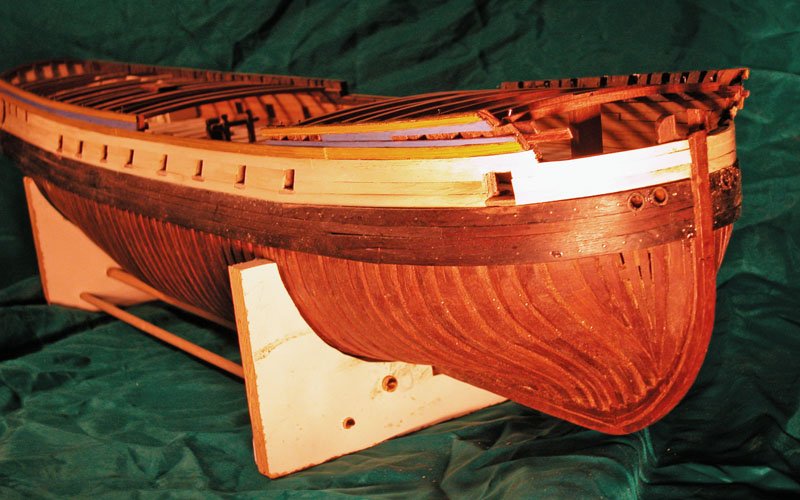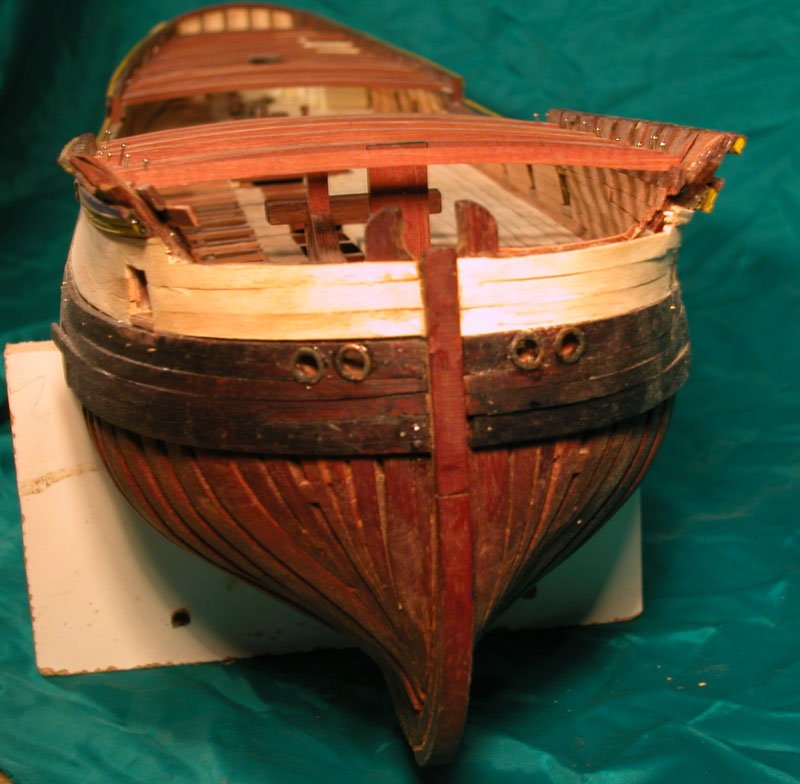-
Posts
834 -
Joined
-
Last visited
Content Type
Profiles
Forums
Gallery
Events
Everything posted by woodrat
-
You're entirely welcome, Bill. Here is the forepart of the ship prior to insertion of beakhead bulkhead The beakhead bulkhead is framed and the stanchions with holes for sheaves applied. The extra planking for the anchor lining extends to the stempost according to plans which brings it up to the thickness of the main wale. Cheers Dick
-
Thanks Siggi52 for the info and useful discussion by private message. He suggested that acquiring and using the most recent plans made by the National Museum in Copenhagen may produce a more upto date model. A recent replica was made from these plans. An excellent model would be made from these plans were they available from the museum. IHowever However, I have proceeded too far along a particular line namely the Akerlund plans to go back to scratch. In addition, Akerlund is the only reconstruction to show a practicable solution to the problem of hogging and twisting of the hull and hopefully I can test his concept in a model. The Nydam Tveir replica shows no evidence of a hogging solution. The next step, having started the building board, is to carve the keel plank , stem and stern post. At the end of the day , if I finish it, the model will be my modification of Akerlund's concept. I do not pretend it will be a "replica" of the original boat as I don't think that can be done. Cheers Dick
-
Never mind, Ahmose. We are a very inclusive mob here at MSW and are happy to talk even to non-modellers. With your breadth of knowledge you can keep us from egregious errors😁 Dick
- 142 replies
-
Thanks, John. The Hjortspring vessel was reconstructed with and without a hogging truss and the crew said it handled much better with the truss. Also this Nydam replca seems to have some sort of anti-hogging device rigged. Cheers Dick
-
Ahmose, thanks for that. Have you done any models yourself? Dick
- 142 replies
-
I have now received the monograph of Harald Akerlund 1963 It is in swedish but does have a useful english abstract and the plans are well printed. I have looked at the original reconstruction by the excavator Engelbrecht 1863 and by Shetelig and Johannesen 1929 and it is my opinion that Akerlund's reconstruction is the most likely to approximate the true shape of the hull. He also cogently argues that the present display of the hull is inaccurate as the stern has been displayed as the stem and vice versa. He concludes that the rudder was installed on the port side. The retrieved rudder seems to support this as well as some holes in the sternpost (as he calls it) which may well be supports for the rudder. I am not convinced of this as I think he may have put the aerofoil rudder back to front. Nonetheless, the rudder side need not be starboard as in the later viking vessels. Indeed, there evidence from stone carving from Gotland of both a quarter rudder at the rear and another one at the fore quarter. In any case, I will go with Akerlunds lines and orientation although I may put the rudder to starboard. He also justifies the presence of a sophisticated central strengtheing frame and hogging truss. Otherwise the extreme thinness of the hull planking would lead to failure of the hull, I think his reconstruction of this is good and explains the profusion of unexplained carved wood pieces found with the hull. I will include the hogging truss as I did with my mycenaean galley. Dick
-
Thanks, Ahmose. Apart from logboats with side extensions, the only survivong example of sewn construction remain the egyptian boats such as the Khufu barge , Dashur boats etc. Itw ould be interesting experimental archaeology to attempt a sewn bronze age levantine hull but I will leave this to someone like you. You may be interested in the model by Sceatha of an egyptian "Byblos" ship: https://modelshipworld.com/topic/23895-byblos-ship-by-sceatha-finished-25th-century-bc/ I have included some sewn elements in my mycenaean galley including a detachable stern piece a la Khufu barge. Cheers Dick
- 142 replies
-
Ahmose welcome to the discussion. You are quite right about the Medinet Habu reliefs. The sea peoples vessels are clearly sail powered and can't be called galleys although auxiliary oar power may have been available. I also accept that much or even most late bronze age sea commerce was syro-canaanite. The vessel I built however is a piratic coasting galley with auxiliary sail power. I would value your thoughts on this putative reconstruction. Cheers Dick
- 142 replies
-
The earliest vessels which have yet been excavated in Scandinavia and Northern Europe are not the Viking sailing ships we all know but are rowed vessels without the capacity to sail. Apart from small paddled boats known from grave burials, the earliest major excavated vessel is the Hjortspring vessel which dates from the 4th century BCE and is a sewn vessel propelled by paddles and having a keel plank. The use of sail is thought to have occurred late in this region and the reasons for this late adoption are far from clear. The earliest accepted archaeological evidence for sail in Scandinavia and northern Europe comes from picture stones dated to the 6th century CE at the earliest. The earliest excavated sailing ship is the well known and frequently modelled Oseberg vessel of the early 9th century CE. Before the Viking era, large vessels for transport of men or goods seem to have been rowed vessels lacking a true keel and a mast. It is not till the Kvalsund boat, a rowed vessel of the late 8th century, was found do we see a true keel and it is from this vessel that the viking age is said to begin. The famous longships of the viking age were often ship burials but in the pre-viking era the boat finds are sometimes found to be bog sacrifices. These vessels were deliberately sunk or broken up in bogs together with weapons and armour similarly broken, which suggests a deliberate sacrifice to a beneficent god to celebrate a victory or as part of religious rites. No human remains have been found with the vessels. The most important bog finds were the Nydam boats. These were excavated in 1863 and, of the three vessels found, only one has been preserved. This is the Nydam B boat, a rowed vessel 23 metres in length with only a keel plank and no mast step. There were 15 thwarts and probably 28 or 30 rowers. A quarter rudder was found with the boat. The boat was constructed from oak and a large part of the vessel has been preserved. There are similarities of Nydam B with the Sutton Hoo saxon ship burial and suggestion has been made that the Nydam B boat may have been the type of vessel that the Frisians, Saxons and Jutes used to reach southern England. However, the Nydam boat is built for coastal or riverine travel and would have had great difficulty with the open ocean so exactly how this crossing was made remains unclear. The lack of a true keel and the construction of the hull make it likely that hogging of the hull would have been a problem. Found in association with Nydam B were many staves and wooden devices which have been interpreted (Akerlund 1963) as being remnant of the mechanism of a hogging truss. This has been questioned by other authorities and remains a possibility. I plan to attempt a model of the Nydam B boat at 1:20 scale using the dimensions estimated by Akerlund who has allowed for 14% wood shrinkage over the century since excavation. I am still considering whether to include the hogging truss in the reconstruction. I cannot start yet as I am awaiting receipt of a publication from Germany on the boat Cheers Dick
-
Yes, Mark. As this vessel is of historical importance to Western Australia, having claimed same for Louis XV in 1772, I thought I should use local timber. I happened to have a sink cut-out made from kiln dried jarrah. As you state, jarrah is extremely hard and durable and cannot be machined without good equipment e.g. table saw, bandsaw, thickness sander etc. I have used jarrah on previous models (venetian round ship, venetian carrack, Yenikapi 12) and found that it machines beautifully. It is the perfect framing wood. When oiled it is initialy quite red but rapidly darkens to the colour of old oak. But beware, do not work this wood (or any wood for that matter) without good dust extraction and masks. Jarrah dust is very fine and irritative. Also it is best to use kiln dried jarrah as old floorboards and roof timbers are brittle and too splintery to use. Jarrah is getting more and more valued in WA and people are less inclined to burn it in their stoves. I dont know how available it is in UK Europe or North America. As an indication of how hard this wood is, it was used during the nineteenth century in english and australian cities in the form of blocks as an alternative to cobblestones as it was so durable and deadened the sound of carriage wheels. Zackly, Steven. Cheers Dick
-
Thanks for all the likes. This latest starts the deck furniture, in this case the manger or at least half of it. This occupies the space aft of the hawse holes and forward of the bowsprit step. The manger consists of a space contained by removable planks which contains and drains any water entering through the hawse holes. It is also a convenient place to house animals, hence the name. It probably won't be seen on completion of the model but what the heck, I know it's there! Cheers Dick
-
Happy New Year All! Further slow progress on the Fat Belly. The hanging knees are installed in quarterdeck and forecastle. Note that some are obliquely placed to avoid gunports and I believe are called dagger knees. All deck beams remain removable so I can complete deck furniture and install the elm-tree pumps etc. The main double capstan has been made. Cheers Dick
-
One of the issues with quarter rudders is the tendency of the rudder to slide laterally away from the hull. To counter this , some sort of restraint is required either using wood guides or buttresses or with extra tackle. The following photos show one method (Yenikapi 12 build) the last picture in the background shows the way the nordics controlled the lateral movement with a withy tether. Cheers Dick
- 508 replies
-
Now for a less savoury part of the ship. "Those vulgar tubes", the seats of ease, at least for the ships officers in the quarter galleries. All the rest of the hoi polloi had to use the heads in the bow. Not much room in the quarter gallery and not much light, either. A bit stygian. The false windows and gingerbread work goes on top of this. I dont know if there was any flushing arrangement on this smaller ships as there was on larger and later ships. Maybe a servant with a bucket and a brush?🤢 Cheers Dick
-
Welcome, Dave. An excellent depiction of a latin caravel with authentic detail. Which plans did you use? Could you do a build log step by step for us? Cheers Dick
About us
Modelshipworld - Advancing Ship Modeling through Research
SSL Secured
Your security is important for us so this Website is SSL-Secured
NRG Mailing Address
Nautical Research Guild
237 South Lincoln Street
Westmont IL, 60559-1917
Model Ship World ® and the MSW logo are Registered Trademarks, and belong to the Nautical Research Guild (United States Patent and Trademark Office: No. 6,929,264 & No. 6,929,274, registered Dec. 20, 2022)
Helpful Links
About the NRG
If you enjoy building ship models that are historically accurate as well as beautiful, then The Nautical Research Guild (NRG) is just right for you.
The Guild is a non-profit educational organization whose mission is to “Advance Ship Modeling Through Research”. We provide support to our members in their efforts to raise the quality of their model ships.
The Nautical Research Guild has published our world-renowned quarterly magazine, The Nautical Research Journal, since 1955. The pages of the Journal are full of articles by accomplished ship modelers who show you how they create those exquisite details on their models, and by maritime historians who show you the correct details to build. The Journal is available in both print and digital editions. Go to the NRG web site (www.thenrg.org) to download a complimentary digital copy of the Journal. The NRG also publishes plan sets, books and compilations of back issues of the Journal and the former Ships in Scale and Model Ship Builder magazines.






